Today's plan is to visit the Kyoto Imperial Palace so we had to wake up quite early to be there on the booked time for the guided tour. That's actually the only way to get in as you can't go in on your own. You need to book well in advance. My friend booked it a month before that day so I suppose that during summer season the time slots are very hard to get.
 |
| Kyoto Street Corner |
 |
| My friend asking how to to the Kyoto Imperial Palace |
I didn't know the Imperial Palace was so big. I actually thought that the Osaka Castle was bigger in terms of land but the Kyoto Imperial Palace or Kyoto Gosho is way bigger. I guess I had forgot that Kyoto used to be the former Japan's Capital City before Edo.
That day was quite foggy as you'll see in the pictures and even though I tried to set the manual settings efficiently, the results were not that good. Anyhow, we're out in the street, very close to the Palace and all of a sudden, we saw these flowers very similar to a Sakura.
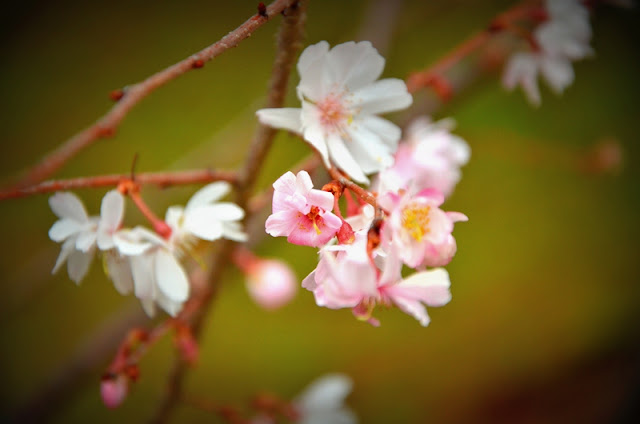 |
| Winter sakura (冬桜 fuyuzakura) outside Kyoto Gosho 京都御所 |
 |
| Winter sakura (fuyuzakura/Prunus subhirtella autumnalis) |
So we sat for some 10 minutes to admire these beautiful colours and eat my breakfast. Afterwards, we queued up to get into the Kyoto Imperial Palace. This palace is different in architecture since it hasn't got a tower like the Ōsaka castle or the one in Okayama. The simple reason for that is because during the Kyoto time, there was no war. Hence, watching towers was not common.
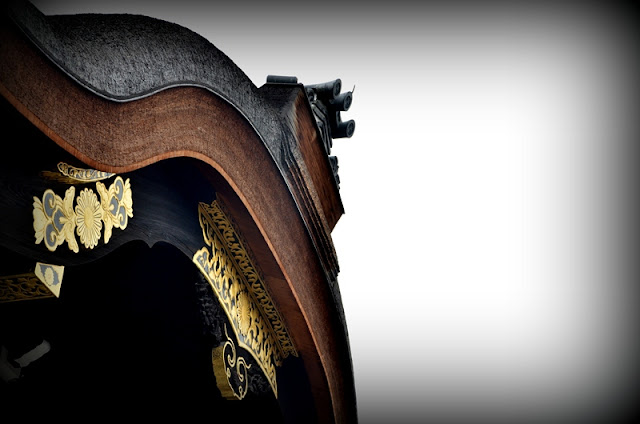 |
| 京都御所 (Kyoto Gosho) Kyoto Imperial Palace - 御車寄 Okurumayose |
The differences are easy to spot if you know a bit about Japanese culture and history. Unfortunately, you're not allowed to take pictures inside many buildings but I can describe it a little bit.
The palace is divided into many big houses but you only have accessible to the main ones and some others are just partly opened to the public. The first ones are the Imperial rooms. There you'll see how interior decoration and tatami pattern design identifies where the visitors slept back in the days. The ones you can see are one opened in a way that you can see the different colours and quality of the tatami.
 |
| 諸大夫の間 (Shodaibunoma ) Guests Rooms - Different interior design - based on social class |
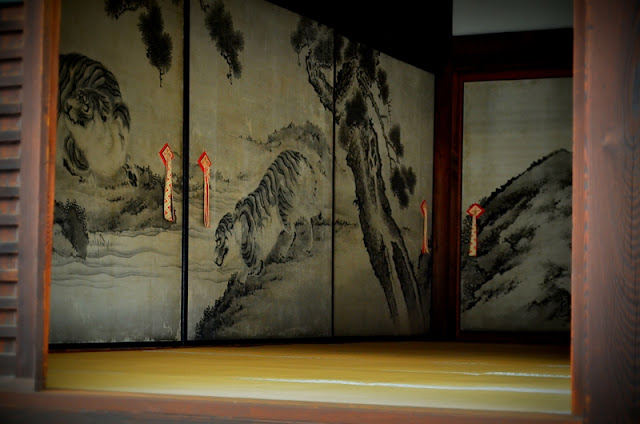 |
諸大夫の間 (Shodaibunoma ) Guests Rooms - Different tatami quality also based on social class |
 |
| 諸大夫の間 (Shodaibunoma ) Guests Rooms |
Moving onto the next buildings you have one of the most beautiful rooms within the palace. Here you will see where the Emperor use to receive the guests. One of the particular things that will perhaps surprise you is the sound the wood makes. Honestly I thought I was going to break it but I was not the only one. The tour guide explained that the floor wood was taken from a special tree and also that wood but be covered with a coat that made the wood noisy. The reason why this was done is because security reasons. As usual the emperor was scared of any attack or assassination attempt.
There are many rooms but one of the ones that I really liked was the one that the emperor is talking to all the feudal lords at the time. That rooms is particularly well decorated and if you're with a Japanese friend who can translate what the explanation of the room is then its even more interesting.
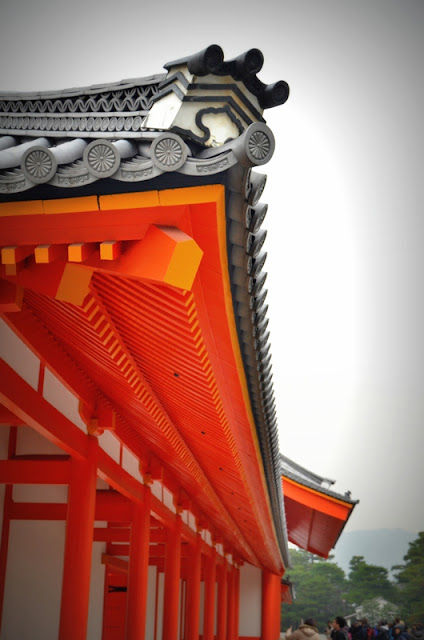 |
| 紫宸殿 Shishinden's Wall |
 |
紫宸殿 Shishiden in the background |
When you go around the Emperor's building you'll see vermilion colour walls,columns and roofs but apart from the beauty displayed you can see a very interesting part of Japanese architecture. As you might have seen on most of my pictures wood is the main element in the Japanese architecture. If you add that to the fact that all Japanese islands have had a 40 inches (1020 mm) annually buildings by now should not be standing. However, Japanese engineering came up with a solution by which they use tiny wood nail preventing rust.
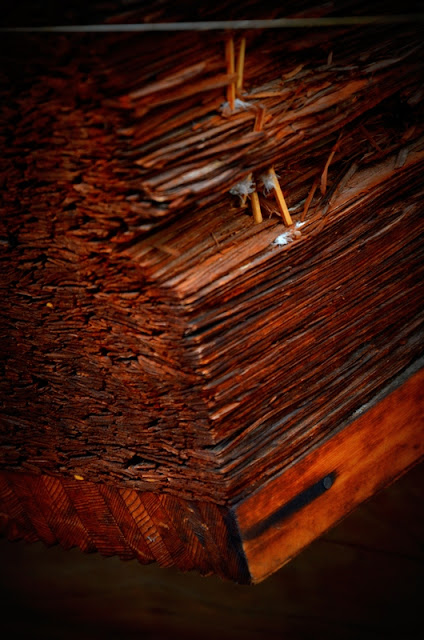 |
| Typical Japanese roof woodcraft and bark cypress (Azuchi-Momoyama period) |
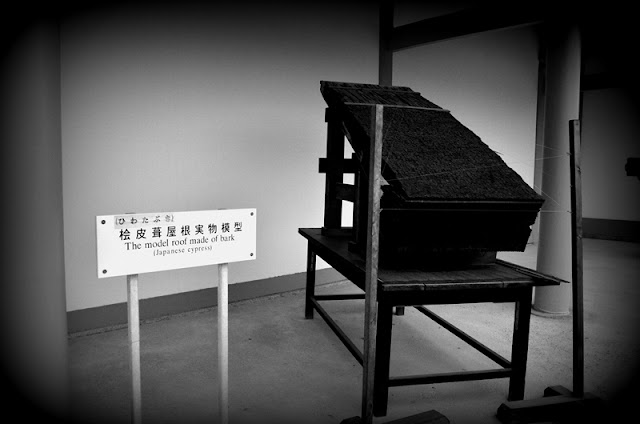 |
| Japanese Cypress roof model |
Then you will see another couple of buildings and you'll arrive at one of the many gardens going around the gardens you will see the watching hill, which is made of huge stones. The stones are huge to be carried by one single human, so the theories say that they were carried to the palace using big logs laid on the ground.
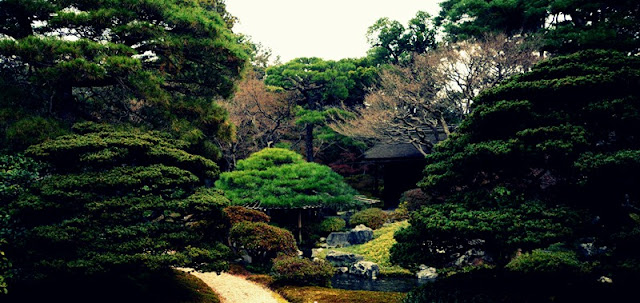 |
| Garden near 清涼殿 Seiryoden |
 |
| Pond near 清涼殿 Seiryoden |
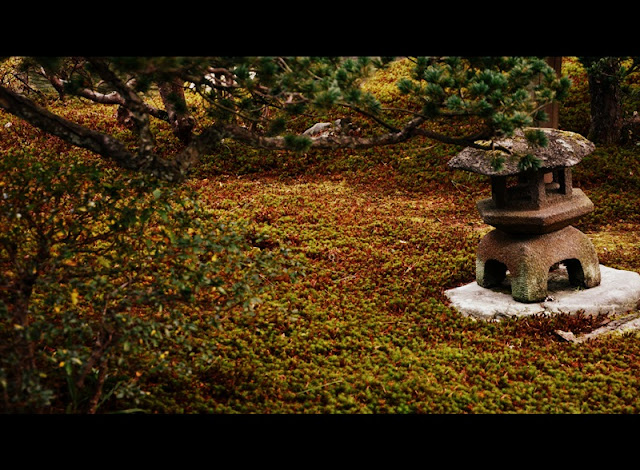 | ||||
| Stone lamp in near 清涼殿 Seiryoden |
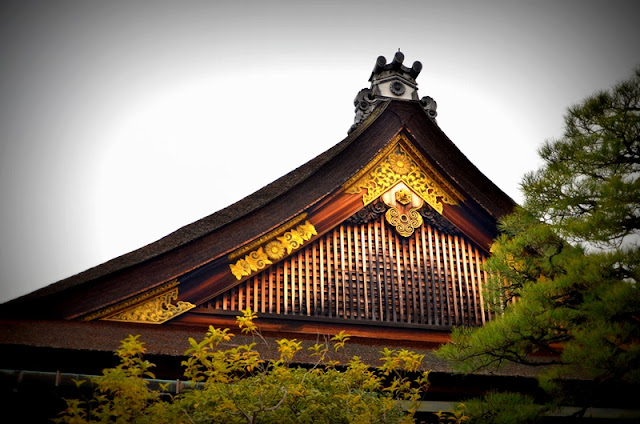 |
| Typical Japanese Roof Art |
Afterwards, you will see another garden which I personally think might be extremely beautiful during Sakura season. The garden has a river that goes through it and even though you don't have access to it you can pretty much see it all.
Once you take some pictures will come the last corner of the palace and the archaeological museum. You have to pay a bit to get in. I think if I'm not wrong it was 5 euros, so 50 ¥ which is seriously nothing. Again I warn you that you will not have translations of any kind but you'll manage to see good pieces of history. Lastly you'll have the souvenir shop where you can buy as many products as you want. I bought a shirt and many key rings.
This time I've decided to leave the food pictures for the end since I've got many of them. Let's start with lunch near the Kyoto Imperial Palace.
After lunch we decided to keep wandering and we came across a unusual (at least for me) Shrine. They main god was the Boar. I keep saying this to myself everyday Japanese religion goes beyond my understanding. The Shrine is big enough to have many worship places and you can see an old tree that used to be there some time ago and also you can pray for your feet health. My friend told me that god was very popular among sport people, and no wonder.
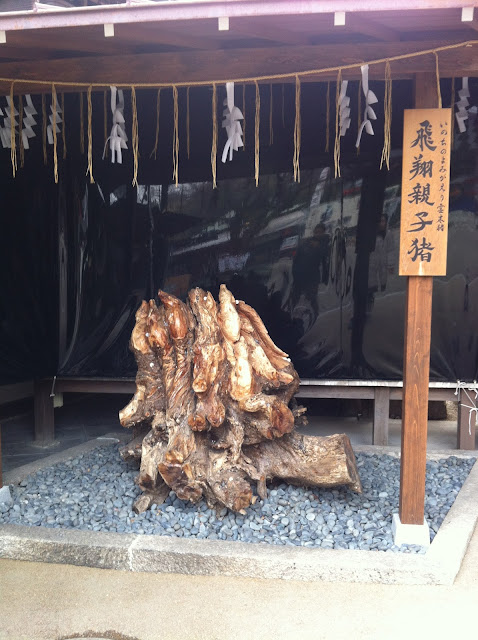 |
| Old sacred tree inside the Go'o Shrine 護王神社 |
 |
| Different kind of Wild boars (Main God) inside the Go'o Shrine 護王神社 |
 |
| Go'o Shrine 護王神社 (Wild boar Shrine) Main Entrance |
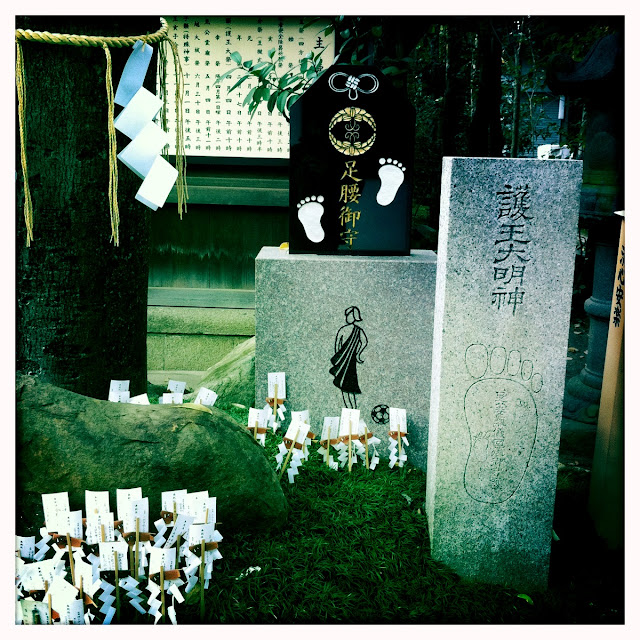 |
| Go'o Shrine 護王神社 (Wild boar Shrine) Feet Praying Corner |
 |
| Go'o Shrine 護王神社 (Wild boar Shrine) |
NOTE: if you go during winter season be aware that the souvenir shop closes at 1730. If your Inside the shop won't take you out of the place, but you have to hurry because the main gates closes and there's a risk that you get stuck inside.
After walking all day again both of us were quite knackered but again hungry and I wanted to try new typical Kyoto food. Thus, my friend decided that we had to pass through a food arcade and see if we were lucky enough to find at least a place open. And we found a couple of places open. We bought food from a pre-cooked food shop. I don't if there's any other place like that in Kyoto (I presume yes) but this place sells small places with different kind of food. It's not hot food, it's actually like what I, a day after, renamed as Japanese tapas.
 |
| Friendliest Shopkeeper ever |
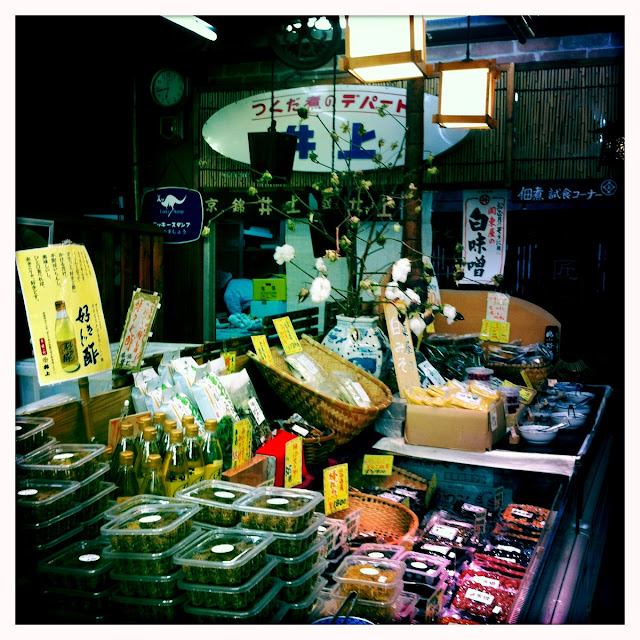 |
| Kyoto style Take away food |
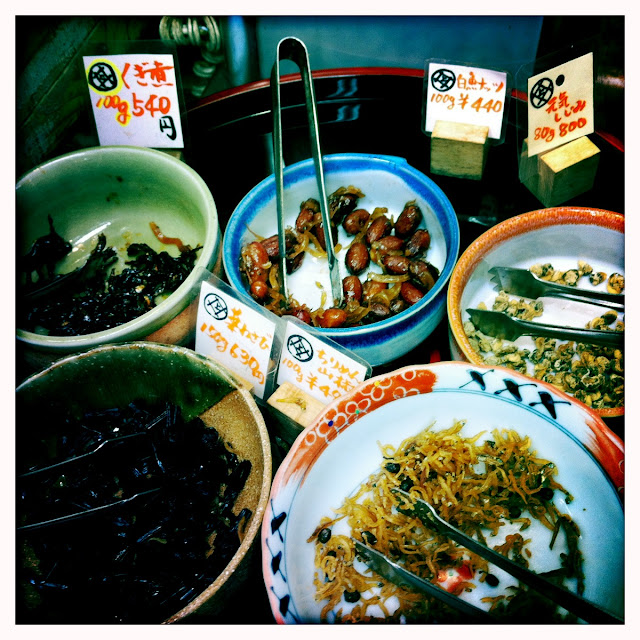 |
| Kyoto nibbles - peanuts, seaweed, mini fish |
 |
| Thank post-its from all over the country and abroad |
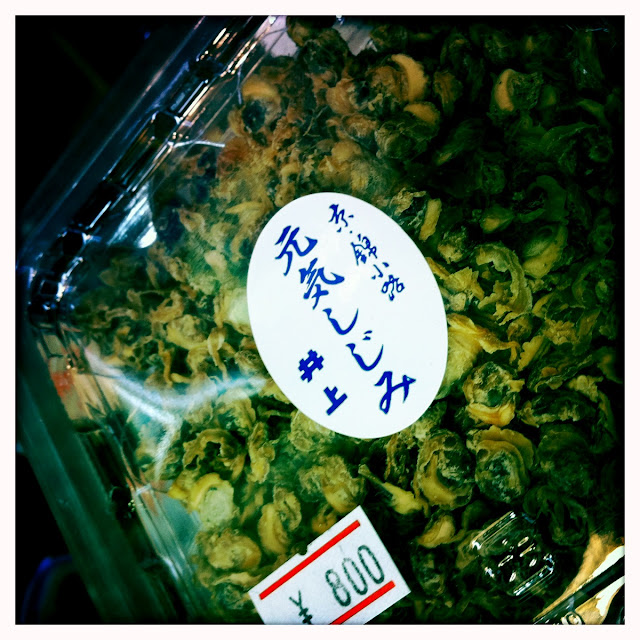 |
| 京都しじみ - Delicious Kyoto Clams |
 |
| Variety of Kyoto take-away food |
 |
| Kyoto - Soy bean Doughnut - very tasteful |
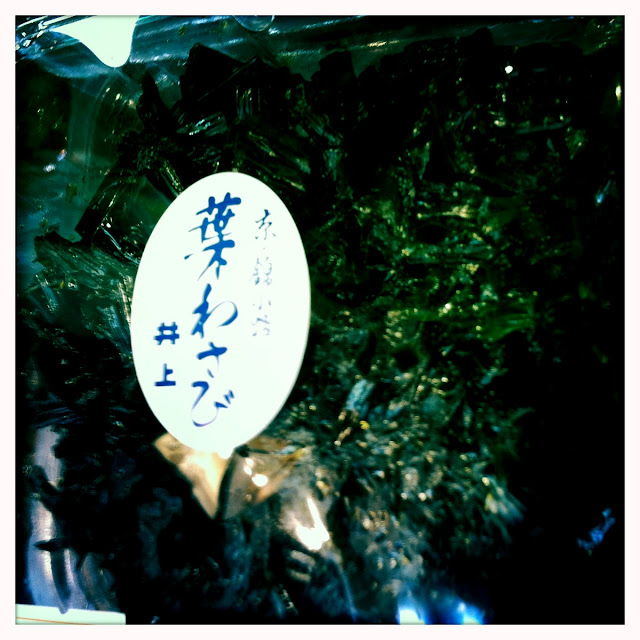 |
| Kyoto take-away food with Wasabi |
They are delicious and even though the little plates look small they fill you. You have to try that at least once if you, because I reckon it's one of the best ways to try a bit of everything. It's not cheap, and most likely you'll end up spending just a bit less than what you would spend on a restaurant. However, the quality of the food is very good so do not fear about taste or food texture.
Kyoto people are sooooooo friendly(as all Japanese people) that I actually became friend with the owner's son. And there you can see a picture of him and me before I left the shop..
Tomorrow we're going to go to the Golden Temple, Funari taisha and also I was going to meet another friend.
More adventures, great places, delicious food and beautiful architecture awaited us the day after.
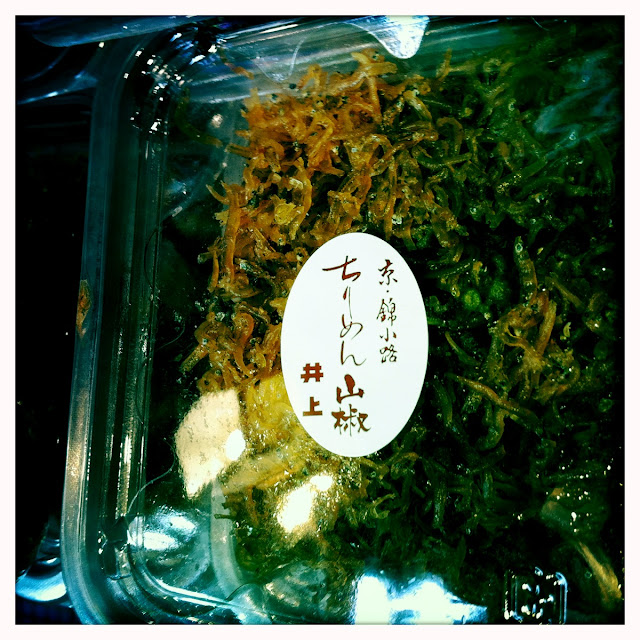
No comments:
Post a Comment